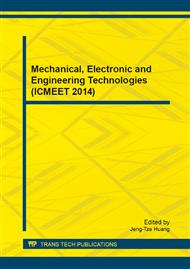p.108
p.113
p.118
p.122
p.127
p.134
p.146
p.150
p.154
A Multi-Objective Programming Model of Dynamic Adjusting Flight Traffic
Abstract:
To alleviate the conflicts between the current flight traffic demand and the resource constraints of airspace, we need to improve the restrictions of flow allocation caused by the static air traffic flow allocation mode. The author analyzes the optimal allocation problem of dynamic adjusting flight flow and draws the conclusion that the problem should satisfy multiple targets, such as low flight delays, low flight cost and balancing the load of the route. Then consider a variety of limiting factors, such as the capacity of the route, flight planning, emergency situations, etc. Then establish multi-objective programming model of dynamic adjusting flight traffic. The objective function is determined by the flight cost, the flight delays and the value of the load balance. And the value of the load balance was first proposed according to the idea of least squares method. Then solve the model based on linear weighted technique. Finally the numerical result shows that the model can satisfy the multiple objectives and dynamic adjust the flight traffic optimally, that proves the rationality and validity of the model and the algorithm.
Info:
Periodical:
Pages:
127-133
Citation:
Online since:
April 2014
Authors:
Price:
Сopyright:
© 2014 Trans Tech Publications Ltd. All Rights Reserved
Share:
Citation:


